Keeping indoor and house cats
Many cats enjoy exploring and roaming outside, but we know it’s not always possible (and sometimes not safe) to give your feline friend free access to the great outdoors. Our vets have put together their tips on how to keep your indoor cat happy and healthy.
Our cats were domesticated a long time after dogs, so it’s only natural that they often prefer to be outside. They love to hunt and find sunny places to curl up in – all parts of being a cat!
But what should you do to keep your furry friend happy if they can’t go outside (or they just choose not to!)? We’re here to answer your questions!
Why might a cat need to be kept indoors?
There are lots of reasons cats may need to lead exclusively indoor lives. These include:
- FIV. One big reason is if your cat has contracted feline AIDs (or FIV) – a virus that weakens their immune system, meaning they may not recover from infections that most healthy cats would. If your cat has FIV, it’s vital that they stay away from other cats. There’s sadly no cure for the disease and it’s easily passed from one cat to another through bites, so cats with FIV need to stay at home. For more information on FIV, visit our Hub.
- Illness or injury. If your cat is poorly or hurts themselves, your vet may recommend keeping them indoors. This could even mean keeping them indoors for weeks while they recover, or even permanently. A common example is deaf cats who can be at increased risk of road traffic accidents.
- Your area. Sometimes if owners live in a built-up area with lots of hazards, such as busy roads, they may prefer to keep their cat indoors so they don’t get hurt in an accident.
- Your home. If you live in a flat or somewhere without clear access to the ground floor, you might prefer to keep your cat in if they can’t safely make their way outdoors.
- Protecting wildlife. Some owners will prefer to keep their cat indoors in order to prevent them from hunting the local wildlife. Remember, this is a natural behaviour in cats that they’ll still need to express in other ways.
- Pedigree breeds. Some more expensive pedigree cats are often a target for thieves who will sell them on to other unsuspecting pet owners. Some owners feel safer if their cat stays indoors. Some have also been bred for behaviour traits that make them great pets but mean it could dangerous for them to be outdoors, for example if they are overly friendly they may be prone to following people and getting lost.
- They choose to be a house cat. Some cats will simply choose not to go outside and become an indoor only cat on their own. If this is the case, all you need to do is take steps to keep the comfy and happy in their indoor lifestyle.
Is it mean to keep a cat indoors and not let them go outside?
While in most cases cats can benefit from having outdoor access, in some circumstance this isn’t always possible. Many cats can lead happy and healthy indoor lives if they are given the right environment.
The main risk of keeping a cat indoors is that they won’t get a chance to exhibit some of their natural behaviours, such as climbing, jumping, hunting and generally exploring. You’ll need to be confident that you can provide alternative ways for your cat to fulfil these behaviours before deciding to keep them indoors.
Another risk of keeping your cat indoors is that some cats get bored easily, especially if they’re used to being outside and suddenly need to be kept inside all the time. Being indoors with all the same stuff can be way less fun than the hustle and bustle of outside! This can lead to them putting on weight or getting stressed because they can’t go out to explore.
If your cat is happy inside then it’s definitely not mean to keep them as a house cat. But if your cat really doesn’t enjoy being kept indoors, it could start impacting on their quality of life. Try to find a way they can safely go outside. You could consider cat proof fencing or a ‘catio’ - a completely enclosed area where your cat can safely spend time outside. If this really isn’t an option and your cat is struggling with being kept inside, you might need to think about whether your home is the correct environment for them and if you’re really providing for all their needs by having them as an indoor cat. If you’re not sure it’s best to speak to your vet for advice.
How can I keep my indoor cat happy?
There are a number of things you can do to make sure your indoor cat is kept entertained and isn’t missing out by not venturing into the great outdoors. If you’re thinking of keeping a usually outdoor-roaming cat indoors, it’s best to chat with your vet as they can give you the best advice to help them adapt.
Create the right environment
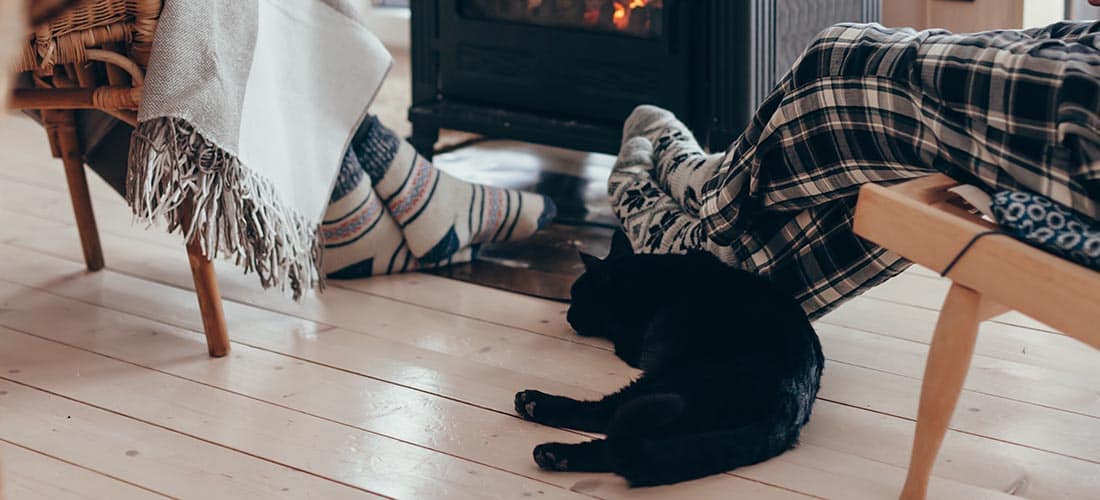
Just like any cat, your indoor cat will need the right home to keep them happy. This means they’ll need plenty of resources – so litter trays, toys, water bowls, food bowls, sleeping areas etc.
At the very least, you should make sure your cat has two of everything (so one for them plus another one just in case). This will help prevent them getting anxious about losing their ‘resources’ so they can lead a happy life.
You should also make sure you have the right setup for your cat. Their toilet area should be kept well away from their food area and their bed should be somewhere nice and quiet they know they won’t get disturbed. In the wild, cats (big and small!) wouldn’t usually eat in the same place they get their water, so while a lot of owners put their cat’s food and water bowls together, you should try to keep them separate.
For more information on giving your cat the perfect home, take a look at our free guide:
Stay stress-free
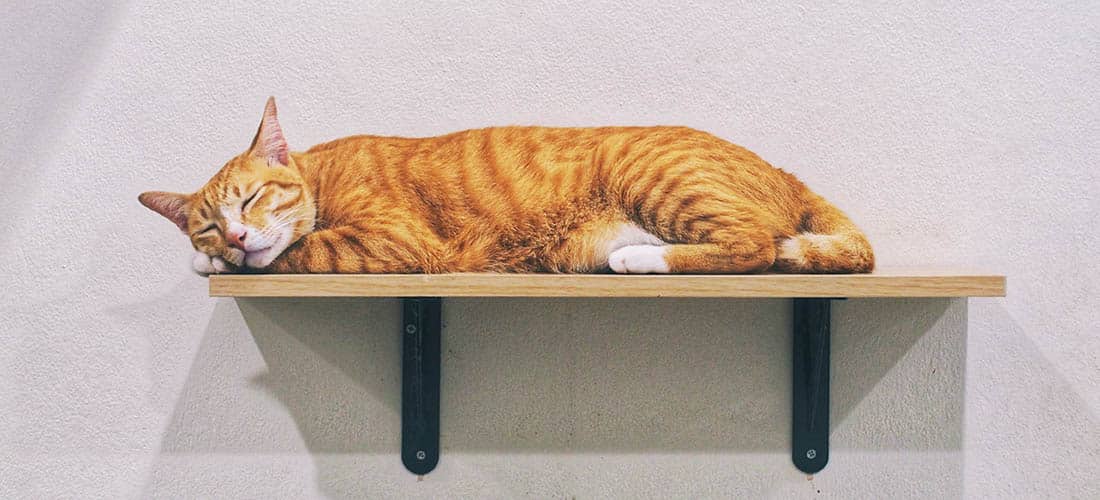
The best way to keep your indoor cat happy is to learn the signs that they’re stressed and create a stress-free home for them.
Cats tend to prefer calmer environments where they are in a routine. Sudden changes can often be upsetting for our feline friends so they like home life to be as predictable as possible (but not their toys. They’ll definitely appreciate lots of variety when it comes to toys!).
If you have a very busy household, for example lots of friends coming over, children who are always playing or people coming and going at different times each day, your house cat might find these changes stressful as they aren’t able to go out to get away from the noise or activity. It’s a good idea to create your cat their own special place, ideally in a quiet room, so they can get away from it all if they want to.
Sometimes living with another cat can be stressful especially if they’re both indoor cats, as this can mean they have less space if they do want to spend time apart. Usually, cats are solitary animals and prefer to be the only pet in the home. If you get two kittens from the same litter, the likelihood is they will be perfectly happy as playmates, but trying to introduce your cat to a new pal later in life if they’re used to having all your attention may not work as well.
Some cats will use the outdoors as a way to escape their unwanted housemate. If they need to be kept inside, suddenly that escape is taken away and they may start expressing their unhappiness in other ways (such as scratching furniture or going to the toilet outside the litter tray).
If you do need to keep two cats who don’t really get along indoors, they’ll need to have separate areas to keep away from each other. They’ll also need separate resources apart from each other - ideally the number of cats in the household plus one extra. This includes litter trays, food and water bowls and beds. You could consider putting up some shelves and using high cupboards or wardrobes to provide them with extra room and exercise. If there’s not enough space for this, you might need to reconsider keeping them indoors!
For more information on keeping your cat stress-free (and recognising stress) take a look at our guide:
Exercise
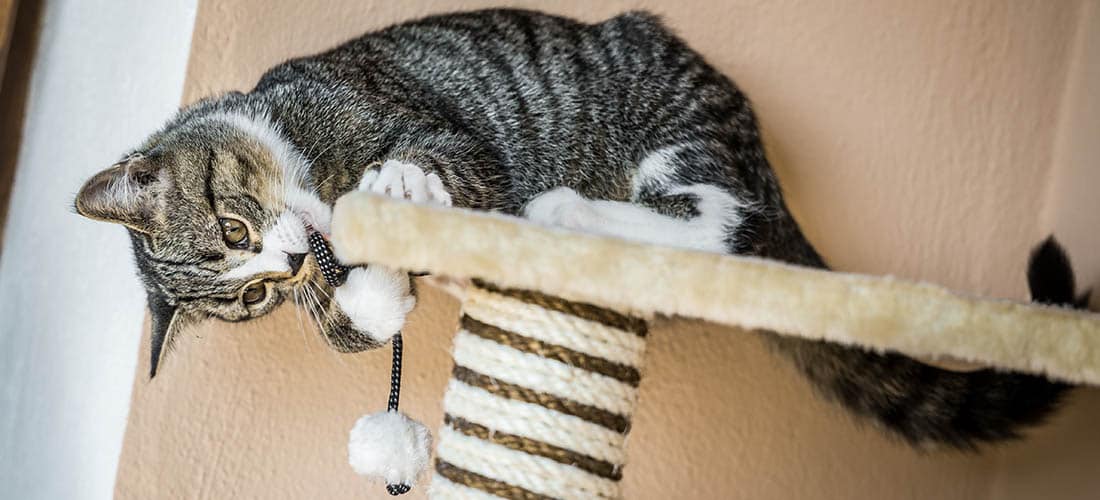
Being indoors all day with not a lot to do can lead to your cat piling on the pounds. To stay fit and healthy, your cat will need to keep doing plenty of exercise to make up for the time they would have spent exploring outside. You might also need to cut down their food or treats if they’re changing from going outside to being kept inside more.
Cats are likely to be at their most playful just before they eat, so try to schedule in playtime before their breakfast and dinner. You can also get puzzle feeders and interactive food dispensers so getting their meals is a bit more interesting for them and keeps them active.
Read more about exercising your indoor cat in our guide:
Hunting
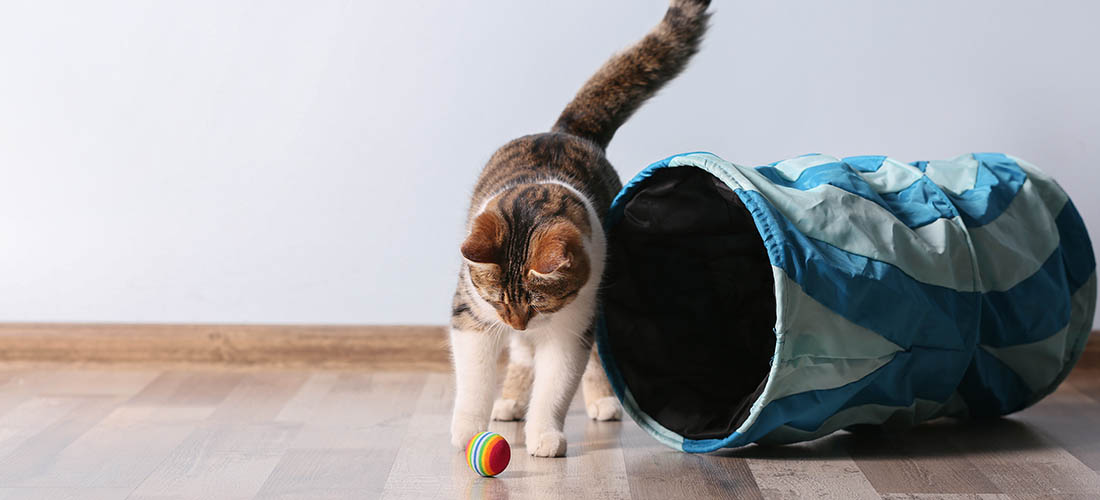
All cats have a natural hunting instinct which they’ll need to express to stay happy. To stop your cat becoming a couch potato or getting stressed, you’ll need to make sure there are lots of ways they can play at ‘hunting’ around the home.
Teaser toys they can leap up at are great, because you get one on one time with your cat and can either get them to chase it along the ground or jump in the air. Don’t forget to let them catch the toy sometimes though! Puzzle feeders are also good for cats as they’ll get to ‘hunt’ for their food just like they would in the wild.
Remember to regularly change your cat’s toys so they don’t get bored of them. If things start getting too predictable, they’ll lose interest. Even just putting down a cardboard box can be great fun for your cat to play in!
Check out our range of boredom-busting toys:
Climbing and jumping
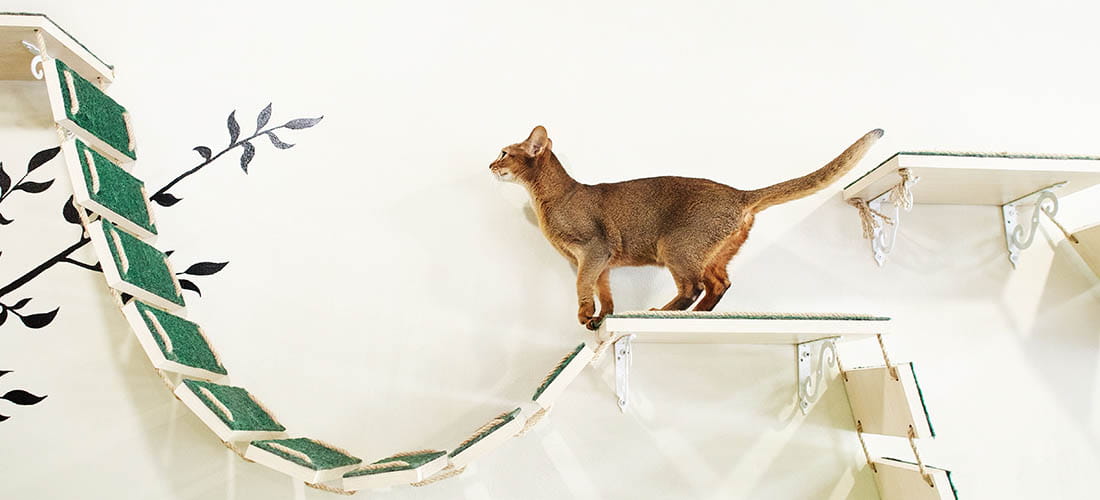
Not only is climbing and jumping a good calorie burner for cats, but it will also help keep their joints moving. Cats who go outdoors have free rein to explore any interesting places they find. This means climbing trees, jumping fences, squeezing through little gaps and generally keeping themselves occupied for hours.
If your cat can’t go outside, consider investing in a good cat tree for them to climb on (with the added bonus of having something to scratch that’s not your furniture!). Pop different toys up on shelves to keep things interesting so they don’t get bored of the same old places.
If you want to really entertain your cat, put in extra shelves around the home. Hide some treats in high up places and set your cat the challenge of finding them! You could also try making them some secret hiding places under the bed, behind the sofa or on top of the wardrobe that are a bit more challenging for them to find.
TV for cats
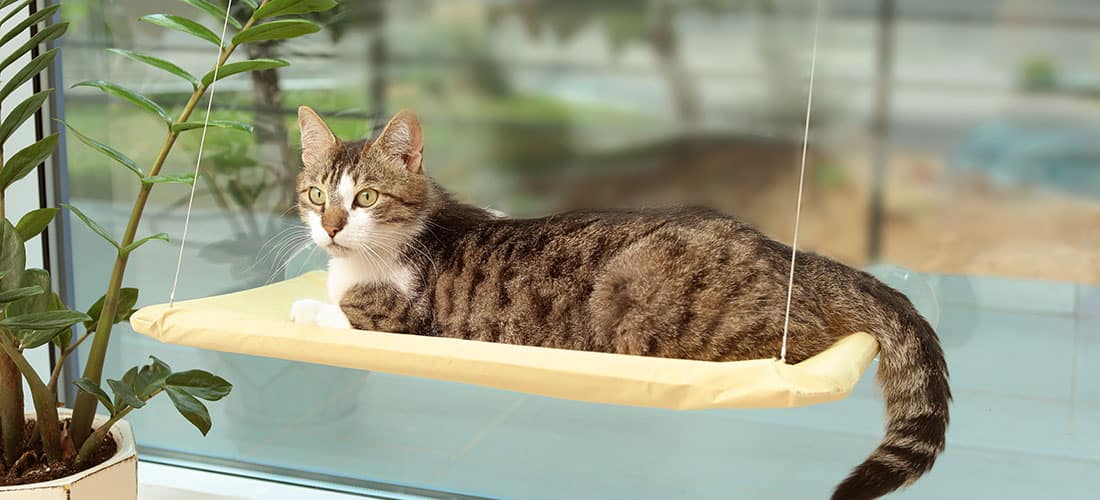
Even if your cat can’t go outside, they’ll still enjoy watching all the goings on (and the birds, of course). Try to provide your cat with a perch or windowsill they can sit on and watch the world go by. You can even get cat beds that are designed to hang in front of windows so they can have the perfect viewing platform!
More advice on keeping cats
Cat food
If you're wondering what to feed your at (and how much!) our free guide has everything you need to know about your feline's food.
What to feed catsGetting a cat
Where you get your cat from is super important. If you're thinking of getting a new four-legged friend, we've put together our advice to help.
Where to get a catEverything cats need
We've put together a list of everything you might need to do to prepare for your new cat! From the essentials, to the toys they'll love.
New cat checklist
